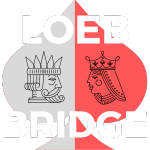The range ask response to a 1NT opening bid fixes a problem with 4-Suit Transfers. If after partner's 1NT opening bid, you use a 2♠ responses as a transfer to clubs and a 2NT response as a transfer to diamonds, you give up a natural 2NT invitation to 3NT. So responder has to use Stayman and then bid 2NT to invite game. If responder has a 4-card, Stayman helps you find a 4-4 major suit fit. If responder doesn't have a 4-card major, using Stayman only helps your opponents. Needlessly revealing information about opener's major suit holding helps the defenders with their lead and play.
The Range Ask is a great substitute for a natural 2NT invitation. After opener bids 1NT, responder's 2♠ bid is artificial, showing a hand which wants to know whether opener is a maximum or a minimum, or a hand with long clubs of any strength.
| South | West | North | East |
| 1NT | Pass | 2♠* | Pass |
| ? |
After responder's 2♠ Range Ask, opener uses step responses to show a minimum, or maximum 1NT opener.
Opener's response to the artificial 2♠ Range Asking Bid tell whether opener is a maximum or a minimum for their 1NT opening bid.
| Opener's Rebid | Meaning |
| 2NT | Artificial, showing a minimum 1NT opener |
| 3♣ | Artificial, showing a maximum 1NT opener |
If responder has a balanced invitation to 3NT, responder passes opener's 2NT (minimum) rebid. This replaces the standard invitational auction where opener has a minimum.
| South | West | North | East |
| 1NT | Pass | 2♠* | Pass |
| 2NT* | Pass | Pass |
This replaces the standard invitational auction where opener has a minimum.
| South | West | North | East |
| 1NT | Pass | 2NT | Pass |
| Pass | Pass | Pass |
If responder has a balanced invitation to 3NT and opener rebids 3♣ to show a maximum 1NT opener, responder places the contract in 3NT.
| South | West | North | East |
| 1NT | Pass | 2♠* | Pass |
| 3♣* | Pass | 3NT |
This replaces the standard auction where opener has a maximum.
| South | West | North | East |
| 1NT | Pass | 2NT | Pass |
| 3NT | Pass | Pass |
If responder has a hand with long clubs, responder's rebid will vary depending on responder's strength and opener's rebid.
| Responder's Strength | Opener's Rebid | Responder's Rebid | Meaning |
| Weak | 2NT (min) | 3♣ | To play |
| 3♣ (max) | Pass | ||
| Invitational | 2NT (min) | 3♣ | To Play |
| 3♣ (max) | See discussion below | ||
| Game Forcing | 2NT (min) | See discussion below | |
| 3♣ (max) |
Responder will force to game with a game forcing hand or an invitational hand where opener says they are a maximum. If responder has a singleton or void in a side suit, responder will show it to help find the right game. Responder shows shortness by bidding a side suit at the 3-level.
| Responder's Rebid | Meaning |
| 3♦ | Game force with long clubs and diamond shortness |
| 3♥ | Game force with long clubs and heart shortness |
| 3♠ | Game force with long clubs and spade shortness |
| 3NT | Natural, to play |
| 4♣ | A slam try with 6 or 7 clubs and no shortness (233)-6 or 2-2-2-7 |
| 4♦ | Roman Key Card Blackwood for clubs |
When responder shows shortness, opener will offer 3NT as the final contract if they have responder's short suit well stopped. If 3NT isn't viable, opener bids a new suit looking for the right game. The partnership may prefer playing in a major suit if a 7 or 8 card fit is available.




